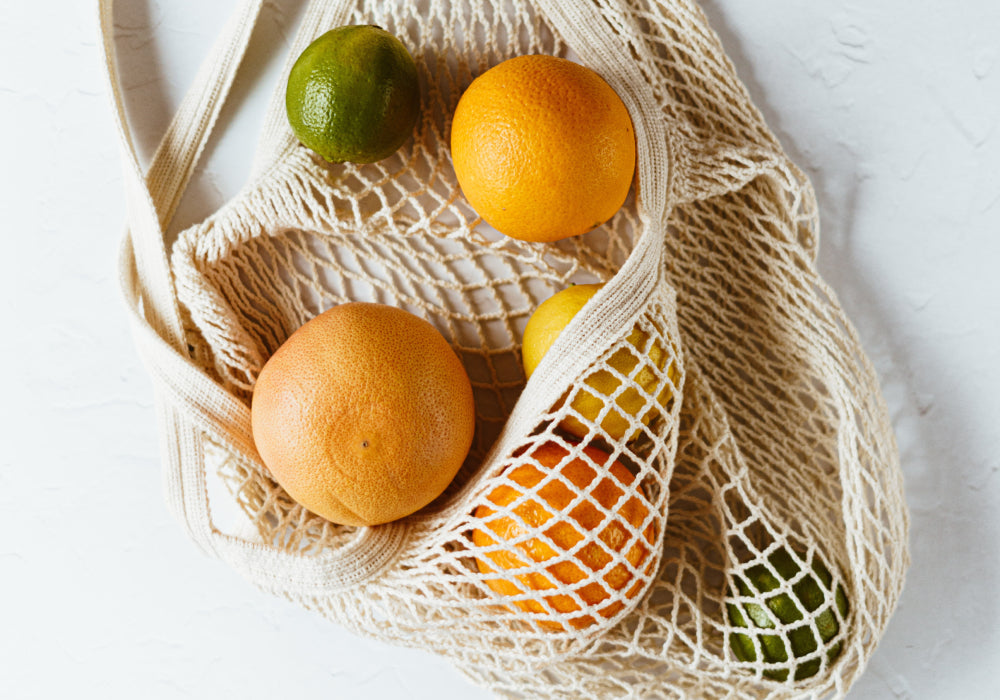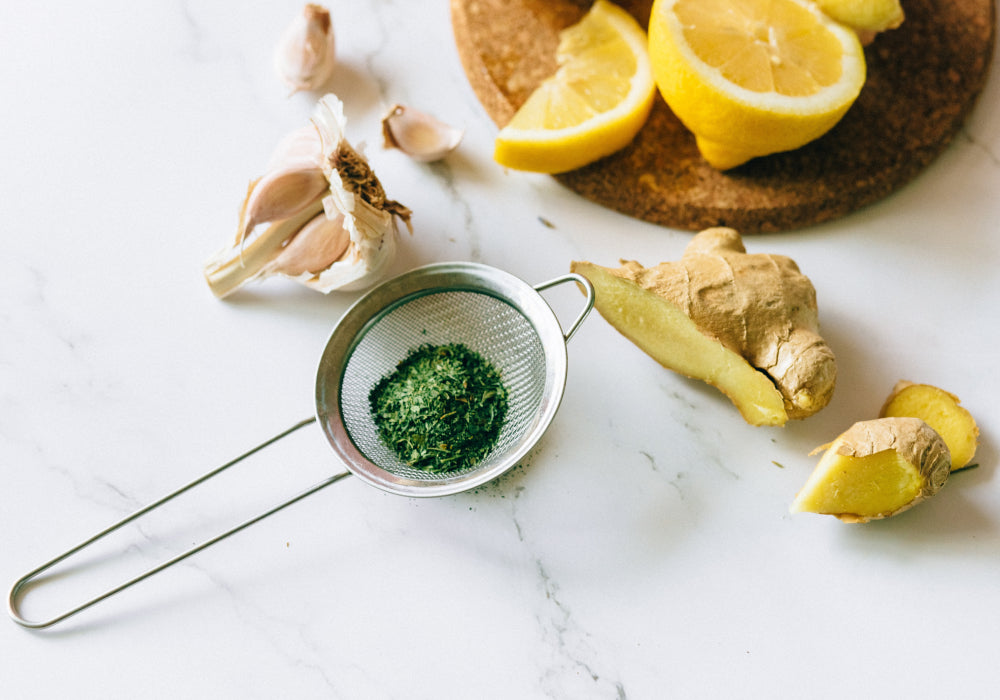Cycle-Syncing: What to Eat During Each Phase of Your Menstrual Cycle, According to a Nutritionist

Cycle-syncing — which involves syncing your hormonal phases to your day-to-day — is the latest trend to grip the internet, but for good reason. When it comes to thinking about hormonal health, it’s the menstrual phase that tends to soak up the attention.
In reality, menstruators have four hormonal phases — and harmonizing your lifestyle with each one can be central to managing chronic pain (think: endometriosis and PCOS), balancing hormones, alleviating PMS symptoms, regulating mood, and conceiving.
Despite its importance, we’re generally taught pretty little about hormonal and menstrual health, outside of chocolate cravings and tampon insertion. It’s no wonder, then, we live in a world where period pain and intense mood swings are totally normalized.
Cycle-syncing nutritionist, Nicole Bendayan, shuns the notion that hormonal cycles are inherently uncomfortable or that birth control is a one-size-fits-all solution. Connecting people to their internal rhythms, she helps menstruators tailor their nutrition, fitness, and everyday lives to the phases of their cycle.
Each phase is best supported with certain foods and nutrients, which can help you thrive both physically and mentally. “Your body is a symphony and your hormones are these chemical messengers that tell your body what needs to be done,” says Nicole. “But in order for those chemical messengers to work properly, you need to support them through specific nutrients.”
Ahead, Nicole helps us break down the macro and micro nutrients, proteins, fats, and antioxidants that can — incredibly — help support our ever-fluctuating hormones, transitioning seamlessly from one phase to the next with all the nutrients we need to thrive.
Menstrual Phase

For Nicole, cycle-syncing nutrition shouldn’t be restrictive — it’s about adding certain nutrients to your plate, rather than subtracting your favorite foods. During your menstrual phase (when you have your period), your hormones are at their lowest as your body works overtime to shed its endometrium.
As you shed blood and tissue, your body is also losing precious iron (up to two milligrams a day, according to Nicole). “Iron is a really important nutrient to focus on [during menstruation], which you can get in oysters, organic liver, spinach, and broccoli,” Nicole tells us. “Consume iron with vitamin C because that helps absorb those nutrients.”
She recommends stocking up on red peppers and citrus fruit, which are high in vitamin C. To help with blood flow, antioxidant and vitamin K rich foods, like red fruits and vegetables — figs, grapes, blueberries, red peppers, cabbage, and radish — can also help support a healthy period. Since alcohol and caffeine can be inflammatory and inhibit iron absorption, you may also want to pass on cocktails and lattes during this phase of your cycle.
Follicular Phase
This phase of your hormonal cycle actually starts on the first day of your period and ends when you ovulate. It usually lasts about 16 days (though every cycle is unique). “During the follicular phase, estrogen is rising. Your egg is developing and that’s actually what’s producing estrogen,” says Nicole. “You need your estrogen to be high enough to trigger ovulation, but if your estrogen is too high or doesn’t get eliminated properly, it can negatively affect you.”
That means balancing estrogen levels is crucial during this phase. Phytoestrogen-nutrient foods, like flax seeds and organic soy, can help your body metabolize and eliminate estrogen. It’s also a great time to snack on cruciferous veggies, like broccoli, cauliflower, arugula, and brussel sprouts.
To help support your gut microbiome, Nicole suggests fermented foods like kimchi, sauerkraut, and kombucha — especially during the latter half of your follicular phase as your body prepares to ovulate. These foods can help your body shed necessary estrogen and prevent it from being reabsorbed, which can cause inflammation and negatively affect those with endometriosis, PCOS, or intense PMS symptoms.
Ovulatory Phase

Ovulation takes place around the middle of your cycle, which will vary depending on the length of your menstrual pattern. This is when your body is most fertile and your estrogen is at its height, which can act as a natural confidence booster. Whether or not you have plans to conceive, you may want to relish the glowy skin and high energy levels that tend to accompany this phase.
While ovulation itself is just a 24-hour event, this phase is also characterized by your uterine cycle, which tends to span several days. From a nutritional perspective, those high estrogen levels can be taxing on your liver. Foods like allium vegetables — garlic, leaks, onions — can help metabolize estrogen, keeping your estrogen and progesterone levels balanced.
Anti-inflammatory provisions can also help support your body’s functions during the ovulatory phase. Fatty fish, sardines, and salmon can help reduce inflammation and promote estrogen elimination. Nicole also recommends fresh black pepper and ginger which are circulatory aids that can help your body circulate all these different nutrients.
Luteal Phase
A precursor to your period, the luteal phase happens when the follicle releases the egg which, in turn, releases high levels of progesterone and some estrogen. You might already be familiar with the PMS symptoms that often go hand-in-hand with this phase — you know, the bloating, anxiety, breast swelling, reduced energy levels, and food cravings (just to name a few).
Nicole emphasizes the importance of supporting progesterone levels through vitamin E and zinc-abundant foods during this phase, including cucumbers and sesame seeds. “I also love to incorporate mood-boosting amino acids,” she says. Chicken, turkey, pumpkin seeds, and peanuts are all rich sources of amino acids, which can help boost serotonin and melatonin levels and prevent hormonal “crashes.”
“Another really important nutrient is magnesium,” Nicole stipulates. “Over 50% of the US population is magnesium-deficient and it has over 300 metabolic reactions in the body, so it’s important to our hormones.” She also boasts that magnesium can help with pain management, which means taking a daily dose of magnesium throughout your full cycle could be worthwhile.
—
We hope you found this post informative — but remember: we’re not doctors and this post is not medical advice! While all posts are fact-checked and well researched, we always recommend you chat with your doctor about any questions or concerns you might have regarding a medical condition. We’re here to support and educate, but never with the aim of disregarding professional medical advice you’ve been given. Phew, now that that’s out of the way, you can go on living unapologetically free.










